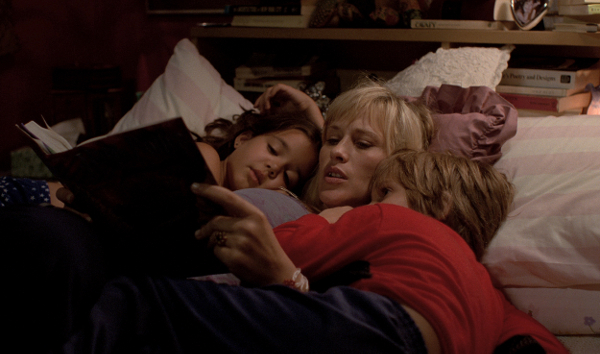If you’ve ever seen a Richard Linklater film, you know that it will most likely be set in Texas, be a coming-of-age story and feature a cast of future star actors.
Ok, so this may not always be the case, but if you’ve ever seen Dazed and Confused or subUrbia, you know it’s close to the truth and the same can definitely be said about his latest film, Boyhood, which ticks all the above boxes.
The movie focuses on the character of Mason Jr and his turbulent childhood whilst his divorced parents try to raise him. The film was shot in 39 days over the course of 12 years with filming taking place over each summer as we see each character grow and age throughout the film. This is no typical coming-of-age story, with Linklater turning it into a complex epic that becomes an insightful exploration of childhood and growing up.
Starting off as a curious 6 year-old, the film follows him, his sister and his divorced parents as they come to terms with many of life’s challenges. His mother’s troubles as a single parent and abusive relationships, his father’s attempts to bond with his kids and get his act together whilst his sister goes through a similar rite of passage.


This leads on to his days in primary school and eventually his arrival at college, we see the genuine transformation of a boy into a man and those around him. What’s unique about it in that sense, is that it’s not just a simple study of Mason’s life but a look at fatherhood, motherhood and sisterhood and how they each play a vital part in the founding of one’s character.
Incredible depth
Linklater has created a level of realism that is unparalleled in contemporary filmmaking with Boyhood. It was a bold commitment to hire the then young cast of Elar Coltrane and his daughter Lorelei Linklater but it’s one that has truly paid off. One of the great outcomes of this choice, is that, the interactions between characters are so natural. Patricia Arquette and Ethan Hawke were perfectly cast as the parents, the latter producing an wonderful performance that is both sincere and powerful.
The interaction the audience has with the film is also an interesting one, as by nature, films have a voyeuristic tendency to them. However, this is not the case with Boyhood, because we see these characters evolve and grow up, and we witness the challenges they face, feeling connected as though we ourselves grew up with them.
The film is an emotional rollercoaster because the audience witnesses detailed moments of the family’s life. Running for 155 minutes, it is long, yet we develop a greater appreciation for these characters and the many moments they share. From first loves, to abusive step-fathers and breakups, there is certainly a lot of drama that keeps the audience entranced. Even the mundane is made beautiful, with many typical events at school or at home made into something much more important, where nothing is taking for granted.
A dramatic backdrop
Music plays an intricate part in this film as it goes beyond its usual role as a soundtrack. There is often no immediate indication that a new year has began in the film and the audience is only aware of this once there are palpable changes in the actors features. However, the music employed in Boyhood serves as a chronological marker, as each new song marks the beginning of a new year.
From Coldplay, to The Hives and Kings of Leon, the tracks chosen are ones that would have been popular throughout the years. It’s also used very poignantly, as mucgh likr real life, music soundtracks episodes in everybody’s lives. There’s always a song that will have a special importance to someone because it connects them to that moment. Linklater illustrates this beautifully throughout the film.


The Texan landscape is used to its full potential with large parts of the state used as a backdrop to the narrative, not only in its aesthetic beauty, but in the way in which it serves as a trope for the coming-of-age story. It reflects important passages in the hero’s life, such as the crossing of the desert as he ventures off to begin his life as a man. Similar to the way music is employed, the landscape is a way of sharing precious moments with loved ones, with many of the children’s best moments shared with their father in the diversity of the countryside.
Looking back at Linklater’s career as a filmmaker, Boyhood is without a doubt his most ambitious yet accomplished work yet. It’s a complex film made simple, that pushes the boundaries of narrative form in a subtle and almost unnoticed way. It manages to take something that on paper, sounds long-winded and ridiculous, yet in reality is truly spectacular. It’s like a Terrence Malick film yet isn’t straining or painfully demanding, and asks nothing from its audience.
Having already been lauded by critics and audiences alike, this cinematic bildungsroman is already being considered one of the best films of the last decade and it may just be.


![[Image - IFC Films]](https://www.fqmagazine.co.uk/wp-content/uploads/2014/07/4251dec72b18ac89643edfb7a8300016.jpg)





